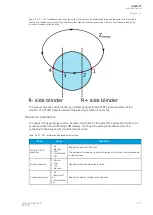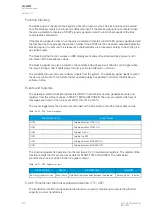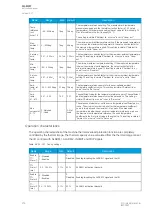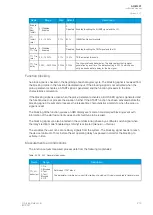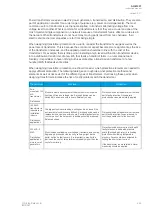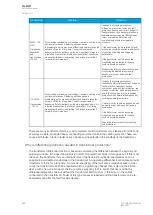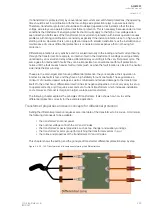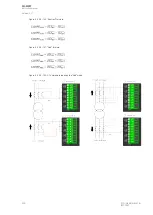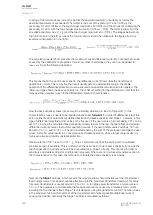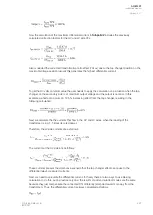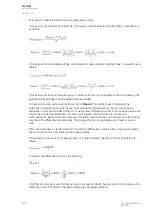
If a transformer is protected only by conventional overcurrent and earth-fault protections, the operating
time should be set in coordination with the low-voltage side protection relays to ensure selectivity.
Therefore, transformer protection should be set to delayed operation (not instant) so that the low-
voltage side relays can operate before transformer protection. This is necessary because under normal
conditions the transformer's energizing and its short-circuit supply to the high or low voltage side is
seen directly on both sides of the transformer. An overcurrent protection with instant operation causes
problems with timing coordination or sensitivity, especially if the instant protection is set on high-current
starting criteria. However, this is not a significant issue with smaller transformers as the installation and
maintenance of various differential protections is considered more expensive than not having full
protection.
Differential protection is very sensitive and it is scaled internally to the loading and fault current flowing
through the transformer. For example, an interturn fault in the transformer's windings could go entirely
unnoticed by an overcurrent relay while a differential relay could trip it in the very first power cycle. The
same goes for internal earth faults: they can be impossible for conventional earth fault protection to
notice until the fault causes heavier fault currents (such as when the fault location is close to the neutral
side inside the star winding).
These are the main arguments for using differential protection: they are sensitive, their operation in
internal in-zone faults is fast, and they have a high stability for out-zone faults. These guarantee a
minimum of unwanted power outages as well as minimized and reduced damage to the transformer
itself. On the other hand, differential protection has its negative properties: it is not very easy to set up
to operate correctly, and it requires a second set of current transformers which increases installation
costs. However, this cost is marginal in larger scale power transformers.
The following chapter explains the principles of transformers. It also shows how how to set the
differential protection correctly for the example application.
Transformer properties and basic concepts for differential protection
Setting the differential protection requires some intial data of the transformer to be known. At minimum,
the following data needs to be available:
• the transformer's nominal power
• the nominal voltages of both the HV and LV sides
• the transformer's special properties, such as tap changer and auxiliary windings
• the transformer's vector group (for matching the transformer vectors in p.u.)
• the ratios and properties of the transformers HV and LV sides.
This chapter shows the setting and the principle of transformer differential protection step by step.
Figure. 5.4.29 - 145. Transformer and its components forming the differential zone.
A
AQ
Q-M257
-M257
Instruction manual
Version: 2.07
© Arcteq Relays Ltd
IM00021
285
Содержание AQ-M257
Страница 1: ...AQ M257 Motor protection IED Instruction manual...
Страница 2: ......
Страница 449: ...Figure 7 3 221 Example block scheme A AQ Q M257 M257 Instruction manual Version 2 07 Arcteq Relays Ltd IM00021 447...
Страница 470: ...Figure 8 14 243 Device installation A AQ Q M257 M257 Instruction manual Version 2 07 468 Arcteq Relays Ltd IM00021...

